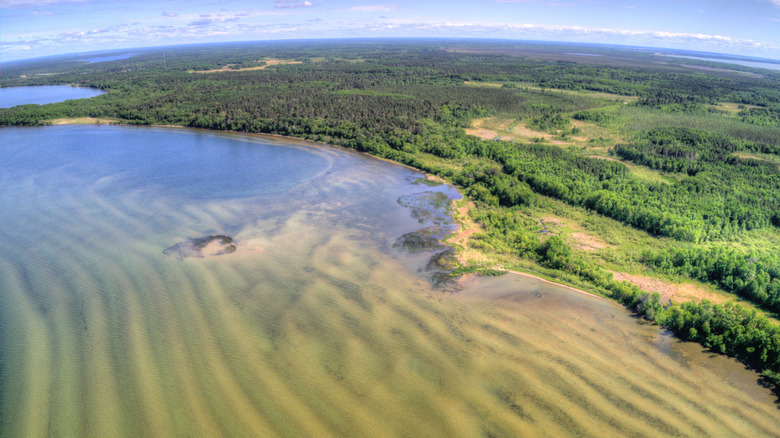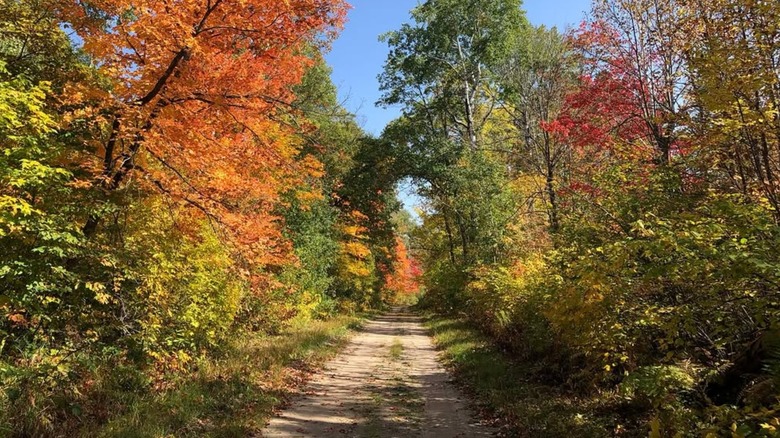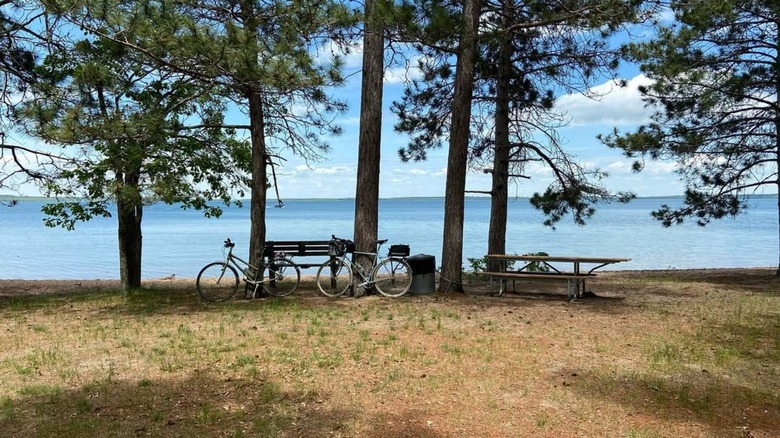One Of The Wettest National Forests In America Is A Wildly Underrated Haven Full Of Trails And Wildlife
Minnesota may be known as the "Land of 10,000 Lakes," but it's actually home to far more — 11,842, to be exact. More than 10% of the state's lakes all happen to be within the boundaries of the first national forest established west of the Mississippi River. Spanning over 1.6 million acres — half of which is water — Chippewa National Forest harbors some of the nation's few wetland areas totally unaffected by human infrastructure and settlement. Perfect for hiking, camping, canoeing, delving into history, and of course, fishing, Chippewa brims with diverse aquatic ecology, time-honored Indigenous culture, and ample opportunities for outdoor recreation.
With hundreds of miles of streams and 1,300 lakes, it's safe to say that you won't get the full experience of Chippewa National Forest without taking to the water. The canoe and kayak routes are both peaceful and gloriously scenic, such as Boy River, Big Fork River, Pike Bay Connection, Turtle River, and some of the northernmost stretches of the Mississippi River. This mighty artery begins in Lake Itasca, which lends its name to Minnesota's oldest state park. Itasca State Park is perfect for a side trip or an alternate place to set up camp, located about 30 minutes west of the national forest. If you're more into wading than paddling, Chippewa also boasts seven designated swimming spots, including day-use areas and campgrounds at three of Minnesota's largest lakes: Cass Lake, Lake Winnibigoshish, and Leech Lake.
Native American heritage lives on at Chippewa National Forest
Say "boozhoo" — the Ojibwe word for "hello" — to the rich Native American culture still present in Chippewa National Forest. Chippewa is actually another name for the Ojibwe people, a word founded on an early French mispronunciation. The reservation of the Leech Lake Band of Ojibwe is located almost entirely within the national forest. The area's history runs deep — Chippewa National Forest contains more than 3,000 archaeological sites ranging from the end of the Paleolithic period to the early 20th century. Cass Lake's South Pike Bay Campground is on the National Register of Historic Places, so you can set up camp in the same place that Indigenous people also used for thousands of years. Campsites at South Pike Bay are reservable from late May to September 1.
Chippewa National Forest is full of camping opportunities. It has 18 designated campgrounds with fees ranging from $14 to $26 per night. Most sites are primitive, but electricity is available at three campgrounds: Chippewa Loop, Onegume, and Stony Point. For a more rugged adventure, there are over 60 dispersed sites open year-round for free within the national forest, as well as 76 backcountry sites accessible by land or water.
Explore hundreds of miles of trails at Chippewa National Forest
Once you're settled in at camp, it's time to hit the trails. Take your pick from nearly 300 miles of hiking and cycling trails. For something short and sweet, immerse yourself in a rare, old-growth pine forest along a 1-mile trail in an area known as the Lost 40. Home to Minnesota's largest red pine, you can peer up at the 120-foot-tall treasure that's upwards of 400 years old.
History lovers will enjoy a stop at Camp Rabideau National Historic Landmark, one of 2,650 Civilian Conservation Corps camps established during the Great Depression as part of Franklin D. Roosevelt's New Deal. You can also hike to the sprawling Joyce Estate, a 4,500-acre resort completed in 1935 with more than three dozen buildings, a private golf course, and even an airplane hangar.
If you're a fan of longer treks, you're in luck, as the longest National Scenic Trail in the U.S. passes through Chippewa National Forest. The North Country Trail, which intersects with Wisconsin's Chequamegon-Nicolet National Forest and Michigan's Tahquamenon State Park with a "root beer" waterfall, is a whopping 4,800 miles from end to end. In Chippewa, you can explore 71 picturesque miles of this expansive route. Keep an eye out for wildlife like whitetail deer, snowshoe hares, ducks, loons, squirrels, coyotes, wildcats, and bald eagles. Chippewa National Forest is home to the largest breeding population of bald eages in the contiguous U.S. And if you're lucky, you may even encounter a moose.


